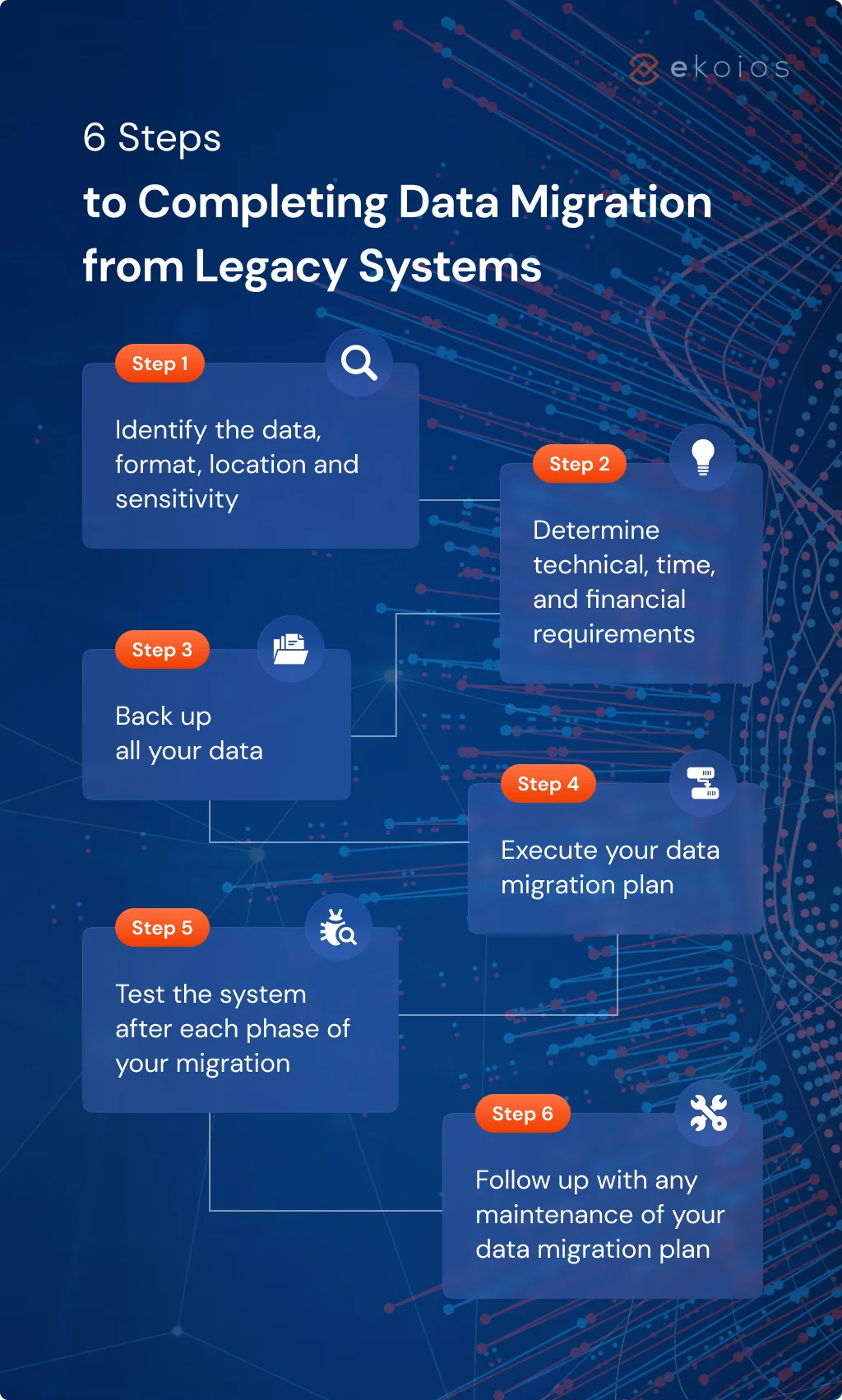
What Is Legacy Migration?
A legacy system is an outdated computing software or hardware that is still in use. While these systems may still meet the requirements they were originally designed for, they are typically based on old technologies that are no longer common. Legacy system migration refers to the modernization of old IT systems to a newer hardware infrastructure or software platform.
6 Steps to Completing Data Migration from Legacy Systems?
Step 1: Identify the data, format, location, and sensitivity
Understand what data you’re moving, the format it’s currently in, and what format it should be in post-migration. If you’re moving sensitive data, make sure any security measures are followed.
Step 2: Determine technical, time, and financial requirements
Be realistic with your estimations. Take the process one step at a time, and take the time to understand each aspect from source data to configuration to testing. The process of data migration from legacy systems can be lengthy and can require assistance from finance, IT, developers, and engineers to work out budgeting and technical aspects of the project respectively.
Step 3: Back up all your data
Save all your important files in the event of a system crash, or if a hard drive failure occurs. Create an appropriate risk assessment report and an inventory of your assets to monitor in case of any compliance issues.
Step 4: Execute your data migration plan
Follow each step of your data migration plan.
Step 5: Test the system after each phase of your migration
Make sure that your system migration has worked. Test for minimal downtime, data integrity, ensure that no data is lost, and check that your applications are fully functional post-migration.
Step 6: Follow up with any maintenance of your data migration plan
Perform regular check-ups on your data migration plan to ensure that it is all in working order.